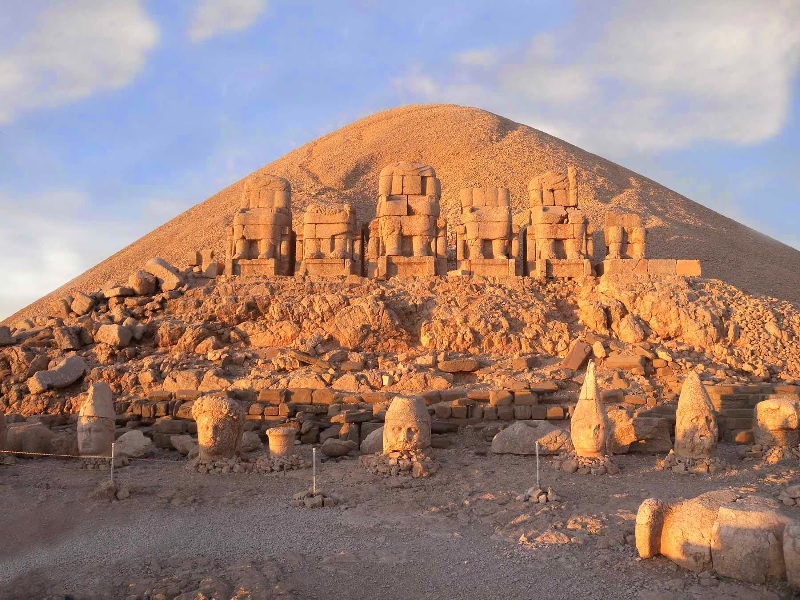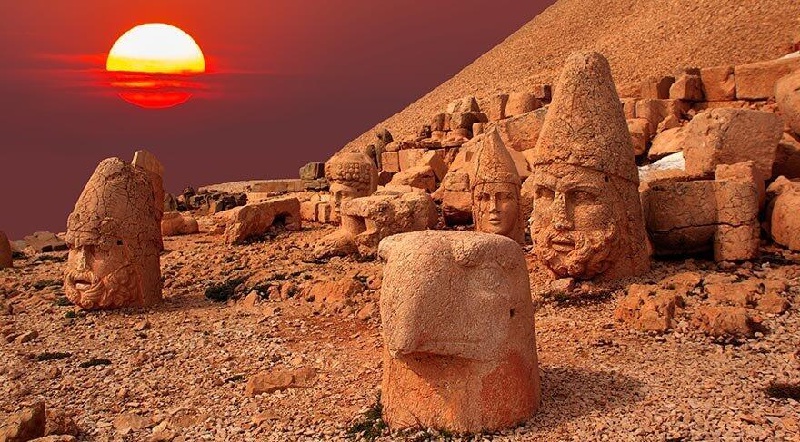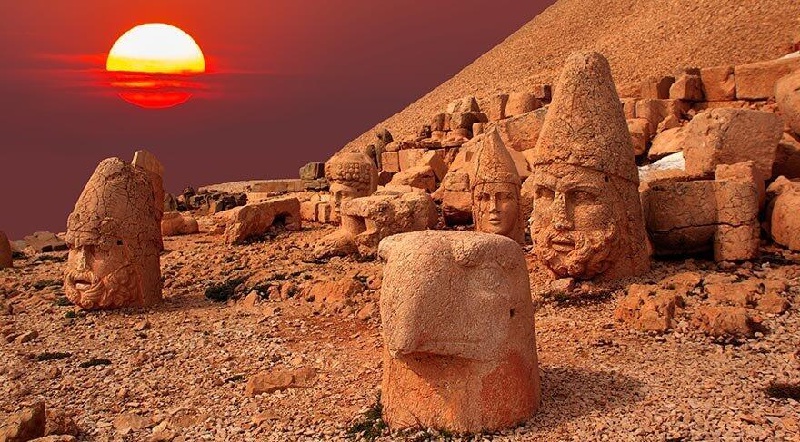Nestled in the rugged landscapes of southeastern Turkey, Mount Nemrut emerges as a silent sentinel guarding ancient secrets. This enigmatic mountain is renowned for its colossal stone head statues, remnants of a kingdom lost to time. In this immersive exploration, we embark on a journey to Mount Nemrut, unraveling the mysteries surrounding its giant stone guardians and the captivating history that lies beneath the shadows cast by these ancient monoliths.

At an elevation of over 7,000 feet, Mount Nemrut is crowned with a collection of massive stone statues that once formed part of an elaborate royal tomb complex. Commissioned by King Antiochus I Theos of Commagene in the first century BCE, these imposing statues depict deities and mythical figures, standing sentinel in silent tribute to a bygone era.

The Kingdom of Commagene, nestled between the Roman and Persian Empires, flourished under King Antiochus I. Mount Nemrut served as the sacred meeting point between gods and humans, with the statues symbolizing the king’s divine lineage. The kingdom’s unique blend of Hellenistic, Persian, and local cultures is reflected in the mesmerizing sculptures that grace the mountaintop.
Reaching the summit of Mount Nemrut is a pilgrimage through time and terrain. Visitors follow ancient processional routes, passing through remnants of colossal statues, altars, and stone slabs inscribed with ancient hieroglyphs. The ascent, both physically and metaphorically, offers a glimpse into the spiritual and cultural significance of this historical site.
At the summit, two colossal terraces, East and West, house the remnants of the stone statues. The East Terrace features statues of Persian and Greek deities, while the West Terrace showcases figures representing the ancestors of Commagene. The seated figures, measuring up to 30 feet in height, emanate an air of mystery as they silently watch over the ancient kingdom.
One of the most captivating aspects of Mount Nemrut is the play of light and shadow during sunrise and sunset. The statues, strategically positioned to face the rising and setting sun, create a stunning spectacle as the first and last rays of daylight cast an ethereal glow on the colossal stone heads, enhancing the mystical ambiance of the site.
Mount Nemrut faces challenges from natural erosion and human activity. Conservation efforts are ongoing to safeguard this archaeological treasure. In 1987, UNESCO recognized Mount Nemrut as a World Heritage Site, acknowledging its cultural and historical significance on the global stage.
Despite its remote location, Mount Nemrut continues to attract intrepid travelers, historians, and archaeologists. The site’s allure lies not only in its historical richness but also in the sense of awe inspired by the monumental stone figures that have withstood the test of time.
Mount Nemrut stands as a testament to the ambition and cultural fusion of the Kingdom of Commagene. The giant stone head statues, perched on the mountain’s summit, speak of an ancient civilization’s reverence for the divine and the profound connections between earthly rulers and celestial realms. As we explore the mysteries of Mount Nemrut, we uncover a chapter of history etched in stone—a legacy that transcends time and invites us to ponder the fleeting nature of empires and the enduring power of monumental artistry.

